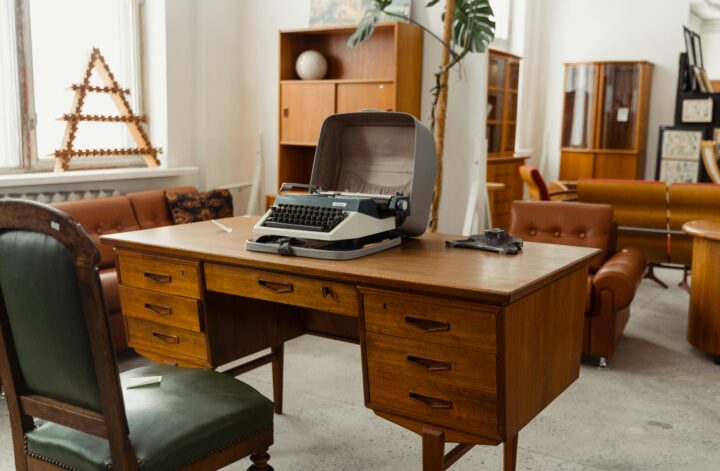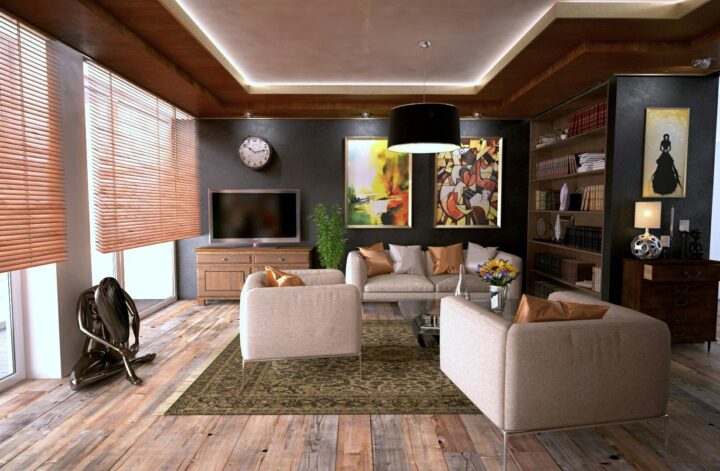There’s a reason old houses feel warm even when the thermostat’s off. They carry stories. Nicks on a banister. Sun-faded paint where a gallery wall once lived. The make-do ethos—born from thrift, craft, and a dash of stubborn optimism- lets you keep that soul while nudging the space forward. You don’t need a renovation. You need a plan, a few simple materials, and the confidence to say, “This still has life in it.”
Start With a “Fabric of the House” Audit
Before you touch a tool, walk your rooms like a curator. List the elements that make up the house’s fabric: timber trim, plaster walls, brass hardware, ceramic switches, woven textiles. Ask of each: keep, clean, repair, or replace? Prioritise what generates the most delight per minute, door handles, lamp shades, small shelves, and window treatments often deliver outsized charm for tiny spend.
Charm Over Perfection
Vintage style isn’t flawless; it’s fearless. Let patina breathe. Clean brass with mild soap, not harsh polish. For wood, try a test patch of beeswax, not a full sand-down. Hairline wall cracks? A limewash can soften them into texture rather than fighting them into invisibility. The goal is gentle uplift, not erasing history.
Small Fixes that Read Big
Doors & drawers: Tighten screws, lubricate slides, align strike plates. A smooth close feels expensive.
Switch plates & vents: Swap plastic for metal or ceramic to add quiet authenticity.
Textiles: Hem curtains so they barely kiss the floor. Add pleating tape for instant structure.
Lighting: Elevate lamps with linen shades; warm bulbs (2700K–3000K) flatter wood and paint.
Sew, Stick, Screw: A Three-Tool Philosophy
Keep a needle and strong thread for hems and buttons. Wood glue for chair rungs and trim. A screwdriver set for hardware. When you stick to these three, you avoid over-engineering solutions that age poorly. Repair what’s there; celebrate restraint.
Know When to Call Reinforcements
Load-bearing shelves, sticky exterior doors, tiled splashbacks that need watertight edges, these jobs benefit from speed, precision, and the right kit. Bring in a trusted handyman for anything structural or safety-critical so you can focus on the creative touches that make the refresh sing.
Paint Like a Preservationist
Patch first, paint second. Feather filler edges with a damp sponge; it blends better under colour. Sample two tones per wall: one on the light side, one on the shadow side. Vintage palettes love contrast with softness, think mushroom, museum white, inky green. Use satin on trim to honour old woodwork without making it look plastic.
Hardware is Jewellery
Mismatched hinges and knobs can look charming if you’re intentional. Choose a metal “family” and let the finish variations tell a story. Clean, don’t strip; decades-old lacquer can flake into a beautiful matte that factory-new can’t replicate.
Soft Furnishings, Strong Impact
Re-cover cushions with sturdy fabrics, ticking stripe, linen, wool. Add piping or contrast buttons for a tailor’s touch. Layer a modest rug over a bigger natural-fibre one to frame seating. Vintage is about composition as much as objects; your edits matter.
Source Smart, not Hard
Reuse centres & salvage yards: Seek solid timber doors, old radiators (for looks), and odd lots of tile.
Online groups: Search by era (“mid-century sideboard”) rather than item type; you’ll find better bones.
Estate sales: Arrive late for deals and ask about “project pieces” the crowd overlooked.
A One-Weekend Room Plan
Friday night: Audit, declutter, clean hardware, patch tiny wall dings.
Saturday morning: Paint trim and radiators; replace switch plates; hem curtains.
Saturday afternoon: Re-hang art lower and tighter; swap lamp shades; revive wood with wax.
Sunday: Reassemble, style shelves with fewer, larger pieces; introduce one vintage anchor (mirror, chair, trunk). Take photos. If something jars on camera, adjust spacing or colour balance.
The Quiet Win
Make-do & mend is not second best, it’s design with a conscience. You’ll spend less, waste less, and keep the quirks that made you fall in love with your space in the first place. And every time a door glides shut or a lamp throws honeyed light across a newly mended shade, you’ll know: this wasn’t luck. It was care.




